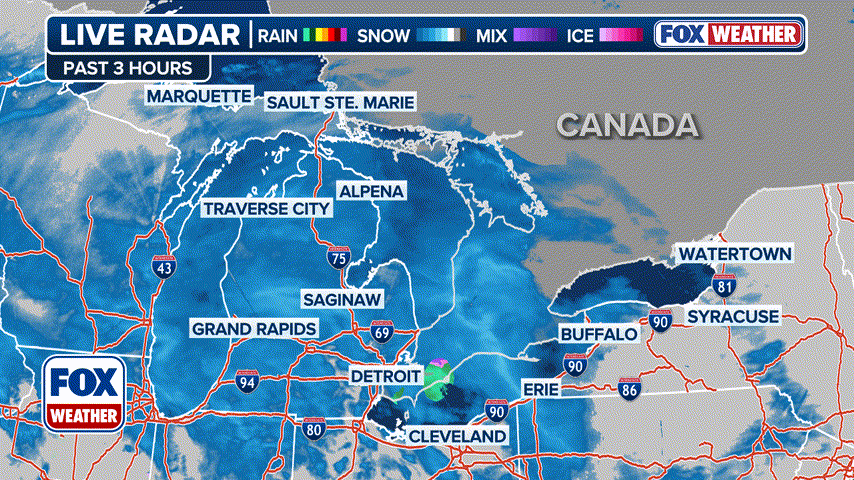Relentless severe weather, flash flood threats shift into Southeast Sunday
After four straight days with a barrage of persistent severe storms and flooding rainfall for parts of the mid-South and mid-Mississippi Valley, the threat finally shifts east Sunday into portions of the Southeast.
Since last Wednesday, the severe weather and flash flooding have been blamed for at least 16 deaths across five states, with 10 of those reported in Tennessee alone.
Birmingham, Atlanta face severe storm threat on Sunday
After hitting the same areas for four straight days from Wednesday through Saturday, the severe thunderstorms and heavy rain are finally shifting east on Sunday, threatening cities such as Atlanta and Birmingham and Mobile in Alabama.
NOAA’s Storm Prediction Center (SPC) issued a Tornado Watch until 7 p.m. ET (6 p.m. CT) for southern and eastern Alabama, the Florida Panhandle and western and northern Georgia, including Atlanta.
WHAT IS THE DIFFERENCE BETWEEN A TORNADO WATCH, TORNADO WARNING AND TORNADO EMEGENCY?

(FOX Weather)
While Sunday’s severe storm threat is much lower than in recent days, strong to severe thunderstorms will bring the risk of wind damage and a couple of tornadoes across parts of the Southeast.
Marginally severe wind gusts will also be possible farther north into portions of the Carolinas and southern Virginia.

(FOX Weather)
Supercells are possible ahead of the main line of storms, particularly in areas where the instability remains the highest through Sunday afternoon. The main line of storms will feature damaging wind gusts as the primary threat, but an embedded tornado is not ruled out.
The highest threat of severe weather will be from the Florida Panhandle through Alabama and into North Georgia, where NOAA’s Storm Prediction Center has posted a Level 2 out of 5 threat.
WHY IS THIS RELENTLESS SEVERE WEATHER PATTERN STUCK OVER EASTERN HALF OF THE US?

(FOX Weather)
Highest flash flood threat centered over Alabama
On Sunday, the pattern that has supported the severe weather and flood events over the past four days will finally break down. This will push a previously stalled front eastward as a cold front across the Southeast.
Ahead of the front, an axis of high moisture, atmospheric energy and wind shear – the change in wind speed and direction with height – will support thunderstorms with locally heavy rain from the central Gulf Coast through central Alabama and North Georgia. Rainfall totals are expected to reach 3 to 5-plus inches in these areas, with rainfall rates that could approach 1-2 inches per hour.
TRAIN DERAILS IN ARKANSAS AS SWOLLEN RIVER FLOODS BRIDGE IN STATE PARK

(FOX Weather)
There’s a possibility that storms could repeatedly move over the same areas from central Alabama into the Atlanta metro area on Sunday afternoon and evening. Should this occur, some localized areas could see more than 6 inches of rain.
Due to this potential, NOAA’s Weather Prediction Center has issued a Level 3 out of 4 flood risk for central Alabama, including Birmingham and Montgomery.
SEE IT: BUILDING SPOTTED GETTING SWEPT DOWN SWOLLEN KENTUCKY RIVER

(FOX Weather)
Severe storm threat focuses on North Florida, Southeast coast on Monday
As the cold front continues to slide eastward, another severe storm threat is expected to develop on Monday across parts of North Florida and the Southeast coast.
Damaging wind gusts and an isolated tornado are expected to be the primary threats in those areas.

(FOX Weather)
River flooding to continue for foreseeable future
While the waterlogged and flooded areas are finally getting a break from the rain and thunderstorms, the flooding is far from over. Rivers continue to rise and are expected to remain in flood stage in the days and possibly even weeks to come. That’s because over a foot of rain has fallen in parts of Kentucky, western Tennessee and Arkansas.
DRONE VIDEOS SHOW PARTS OF KENTUCKY TOWNS DISAPPEAR UNDER FLOODWATERS
There have been more than 700 reports of flooding over the past week and over 1,000 reports since the start of the year. During an average year, we wouldn’t hit the 1,000-report mark until early June.

(FOX Weather)
Source link




















